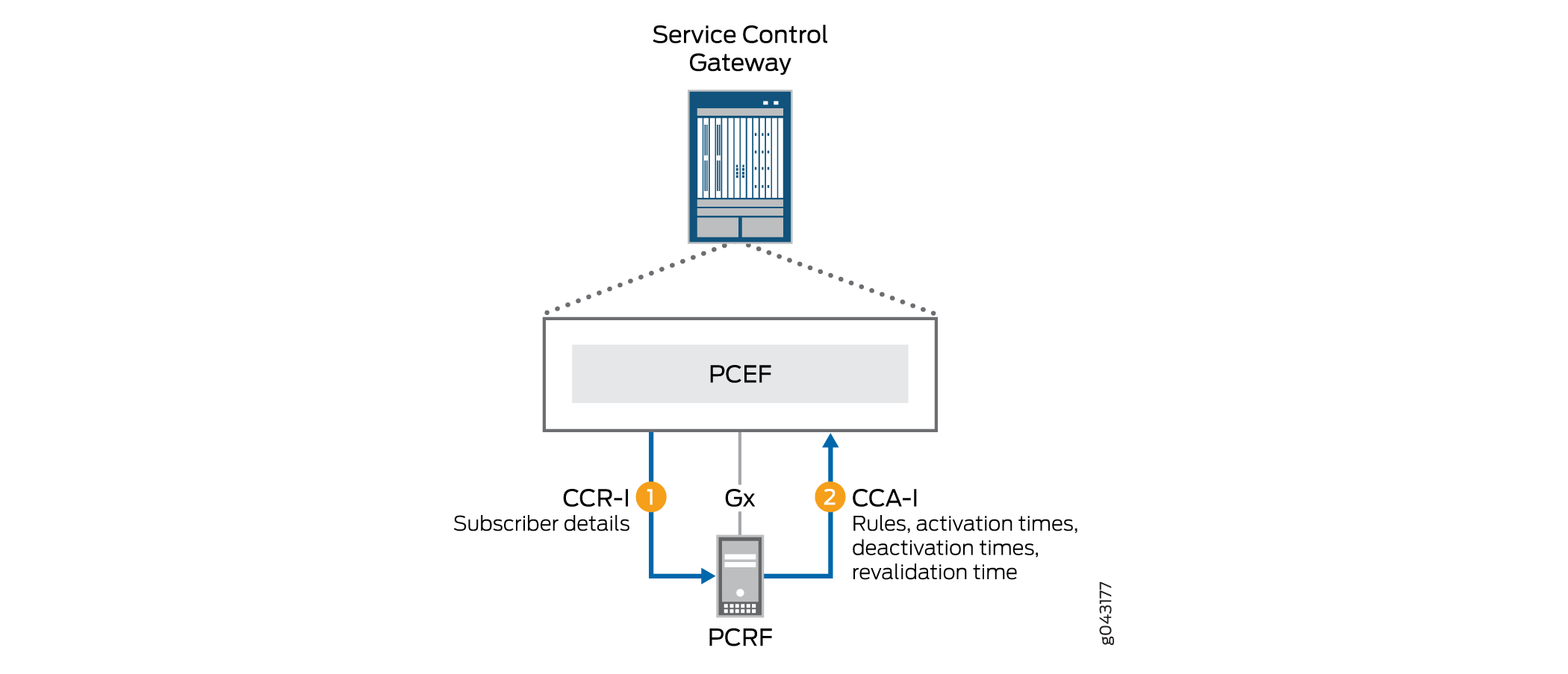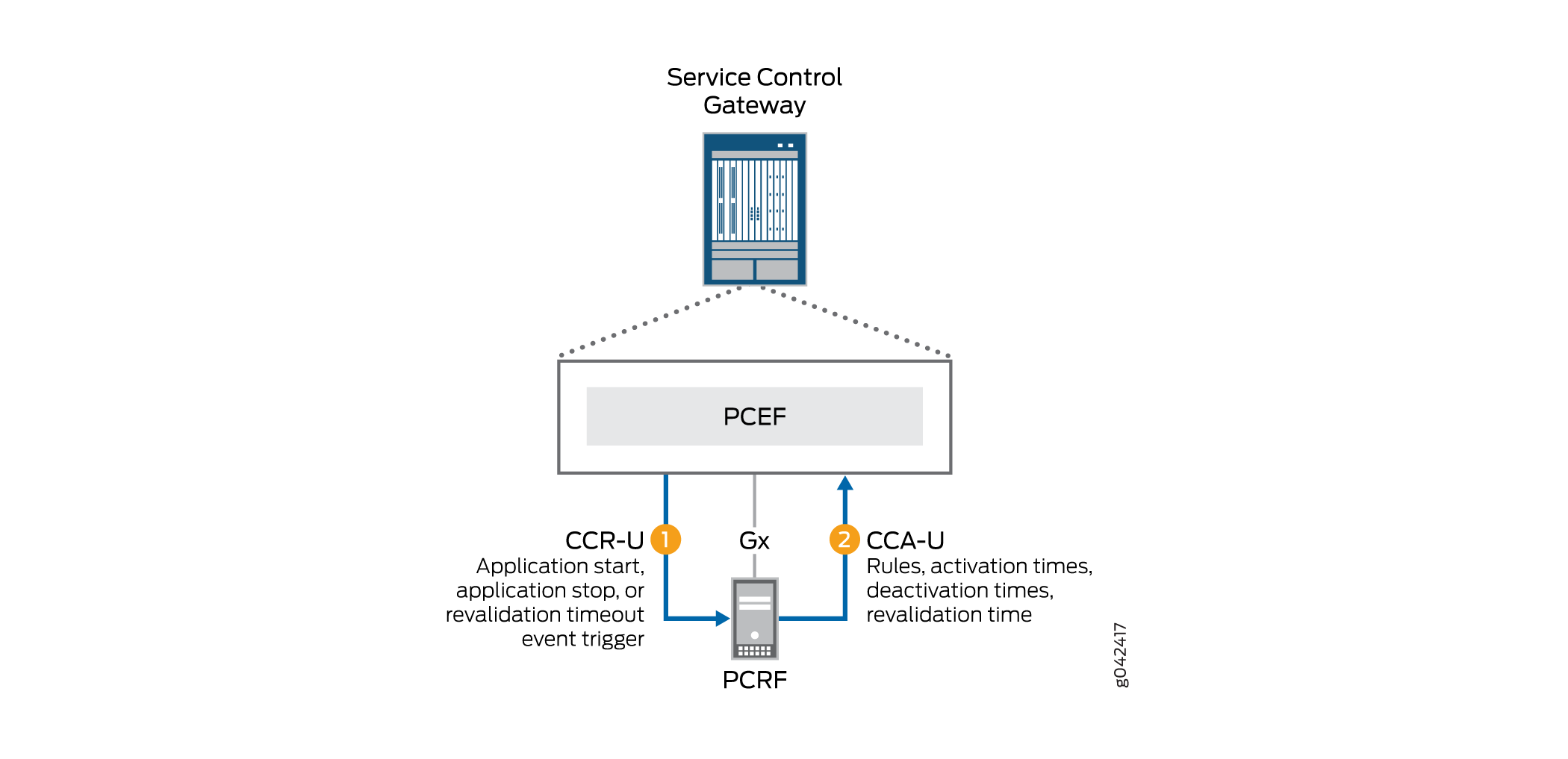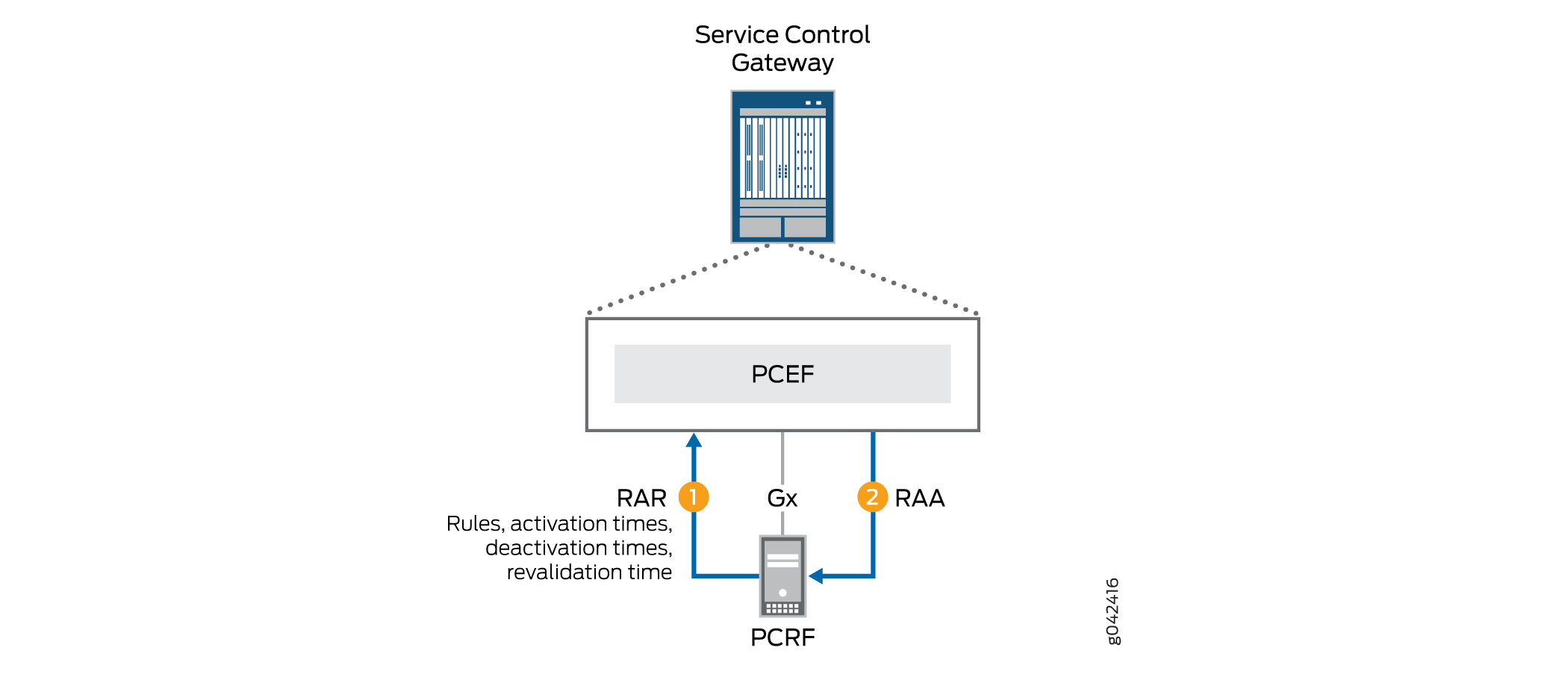Understanding How Subscriber-Aware Policy and Charging Control Rules Are Provisioned Dynamically by a PCRF
With dynamic policy control, the policy and charging rules function (PCRF) controls the provisioning of policy and charging control (PCC) rules on the Junos Subscriber Aware PCEF for a subscriber. Dynamic policy control is enabled when a dynamic-policy-control policy and charging enforcement function (PCEF) profile is assigned to a subscriber. Dynamic policy control requires Junos Policy Control.
This topic includes the following sections:
Policy Decisions
The PCRF is central in making policy and charging control decisions and can install, activate, modify, or deactivate a PCC rule on the PCEF at any time. The PCRF can make its policy and charging control decisions based on different sources, including:
-
Subscription information for the user equipment that is received from the subscription profile repository (SPR)
-
Operator configuration in the PCRF
-
Information from the access network about the access technology
-
Information from the PCEF, such as the name of the application that the subscriber is using
The Gx interface is used to send PCC rule provisioning information from the PCRF to the PCEF, and to provide notification of traffic-plane events from the PCEF to the PCRF.
Supported Operations
Junos Subscriber Aware and Junos Policy Control support the following operations with the PCRF:
-
Install or modify rules—The PCRF sends the
Charging-Rule-InstallAVP to install a PCC rule that is not already installed or modify an existing rule on the PCEF. -
Remove rules—The PCRF sends the
Charging-Rule-RemoveAVP to remove a PCC rule that is already installed. -
Activate rules—The PCRF sends the
Rule-Activation-TimeAVP to indicate the time at which to activate the rule, and it is contained within theCharging-Rule-InstallAVP. This operation results in a single activation of the rule, not a recurring activation schedule. -
Deactivate rules—The PCRF sends the
Rule-Deactivation-TimeAVP to indicate the time at which to deactivate the rule, and it is contained within theCharging-Rule-InstallAVP. This operation results in a single deactivation of the rule, not a recurring deactivation schedule. -
PCEF session revalidation—The PCRF sends the
Revalidation-TimeAVP along with theEvent-TriggerAVP with the valueREVALIDATION_TIMEOUTto indicate the time at which the PCEF must request PCEF session revalidation from the PCRF. When the specified time is reached, the PCEF sends an event trigger with the valueREVALIDATION_TIMEOUTto request PCEF session revalidation. -
Report application start or stop—The PCEF sends an event trigger when it detects the start or stop of an application.
The containers for the PCC rules are named Charging-Rule-Definition. Multiple Charging-Rule-Definition containers can be
sent within a Charging-Rule-Install or Charging-Rule-Remove, each of which is applied per subscriber.
If a time zone is configured on the router, the activation and deactivation settings apply to the configured time zone and are adjusted for transitions to and from daylight saving time.
Methods for Provisioning PCC Rules
The PCRF uses one of the following procedures to specify the PCC rules that the PCEF applies:
-
Pull mode during TDF subscriber creation—Applies when the MX Series gateway receives a request for a new TDF subscriber. The PCEF sends a credit control request initial (CCR-I) message to the PCRF with information about the subscriber. The PCRF downloads PCC rules to the PCEF in a credit control answer initial (CCA-I) message, which may also include any activation and deactivation times that apply to the rules and the time at which the PCEF must re-request PCC rules from the PCRF. Figure 1 shows the message flow for a pull procedure during TDF subscriber creation.
Figure 1: Message Flow for Pull Mode During TDF Subscriber Creation
-
Pull mode after PCEF event trigger—Applies when the PCEF sends an event trigger to the PCRF. This can occur when the MX Series router detects a new application start or stop or when the revalidation time has occurred. The PCEF sends a credit control request update (CCR-U) message along with the appropriate event trigger to the PCRF. The PCRF might download new rules to the PCEF in a credit control answer update (CCA-U) message, which may also include any activation and deactivation times that apply to the rules and the time at which the PCEF must re-request PCC rules from the PCRF. Figure 2 shows the message flow for a pull procedure after a PCEF event trigger.
Figure 2: Message Flow for Pull Mode After PCEF Event Trigger
-
Push mode—Applies when the PCRF provisions PCC rules without obtaining a request from the PCEF. The PCRF sends the PCC rules in a re-authorization request (RAR) to the PCEF based on information sent to the PCRF through the Rx interface or in response to a trigger within the PCRF. The RAR may also include any activation and deactivation times that apply to the rules and the time at which the PCEF must re-request PCC rules from the PCRF. The PCRF includes these PCC rules in an RAR message because the PCC rules were not requested by the PCEF, and no credit control request (CCR) or credit control answer (CCA) messages are triggered by the RAR. The PCEF responds with a re-authorization answer (RAA) message. Figure 3 shows the message flow for a push procedure.
Figure 3: Message Flow for Push Mode
